
Unlike many forms of cooking that are fairly forgiving, baking bread is an exact science. Humidity, warmth and the type and amount of yeast you use can all affect how quickly bread rises. If the bread rises too much, the results can range from minor textural changes to complete disaster. Watch the bread closely, but remember that the more you bake in your kitchen, the better you'll become at knowing just when bread is ready for baking.
A Crumbly Mess
The first thing you'll notice if bread has risen too long is a negative change in its texture. Yeast, a one-celled fungus, feeds on sugar and releases alcohols and carbon dioxide. The carbon dioxide forms bubbles in air pockets in the dough. As the bubbles multiply, the bread rises. If it rises too much, though, the yeast creates too many air bubbles. The result is a dry, crumbly bread with a porous texture and lots of large holes.
An Off-Flavor
The alcohols released by yeast give bread its rich, earthy flavor, but if the dough rises too long, that flavor becomes pronounced. The bread has a heavy yeasty taste or smell and in some cases, can even taste sour. This problem can also happen if you place the dough in a very warm location so that it rises too quickly.
A Complete Implosion
The worst-case scenario of letting bread rise too long is that it simply collapses during baking. Imagine blowing a bubble with bubble gum. As the bubble expands, the bubble gum skin stretches tighter and tighter. Keep blowing and it eventually explodes. This is a bit like what happens to bread in the oven. If the bread contains too many carbon dioxide bubbles, the gluten in the bread can't support them and breaks down.
From Novice to Expert
There is not much you can do if bread dough has risen too much except comfort yourself with the knowledge that almost every baker has made the same mistake. Going forward, though, you probably won't make the same error again. After you've kneaded the dough, form it into a soft ball and place it in an oiled bowl. Place a clean kitchen towel or plastic wrap over it and set it in a warm spot out of drafts. Let the dough rise until it doubles in size. Then, stick two fingers into the dough. If indentations of your fingers remain, the dough is ready to shape. If the dough springs back, it needs more time. If the recipe calls for a second rising after you've shaped the dough, then let the bread rise until almost double. Stick one finger in the side of the loaf and check for the remaining indentation, which indicates that the bread is ready to bake.
Related Articles

How to Freeze Brioche

How to Keep Crusty Italian Bread Soft
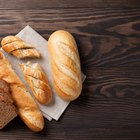
How to Make Bread That Does Not Crumble ...
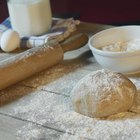
Why Does Bread Drop in the Middle When ...

How to Bake Bread in a Pyrex Glass Tube
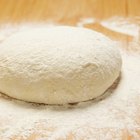
What Is the Finger Test for Bread Dough?

How Many Calories in Gluten-Free Bread?
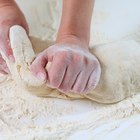
How to Make Bread With Ancient Grains
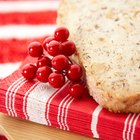
How Long Does Banana Bread Stay Fresh?

How to Make Bread From Colonial Times

How to Make Light Airy Italian Bread ...

Does Yeast Cause Holes in Bread?

Does Bread Expire?
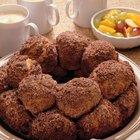
Can I Make Monkey Bread the Night ...

Quick Method for Thawing Frozen Bread ...

How to Make Bread Tender

How to Make Bread Sticks Out of Pizza ...
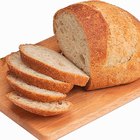
How to Make Toasted Bread Sticks With ...
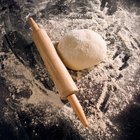
How to Preserve Dough That Has Risen
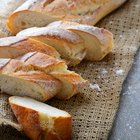
Quick and Easy French Bread Recipe
References
Writer Bio
Julie Christensen is a food writer, caterer, and mom-chef. She's the creator of MarmaladeMom.org, dedicated to family fun and delicious food, and released a book titled "More Than Pot Roast: Fast, Fresh Slow Cooker Recipes."
Photo Credits
George Doyle/Stockbyte/Getty Images